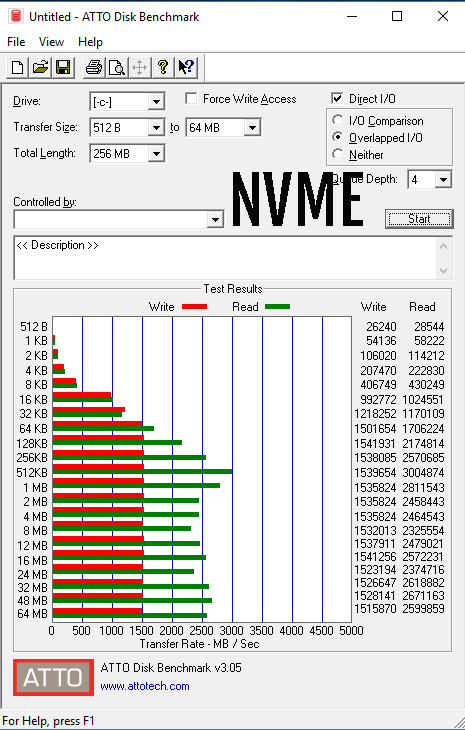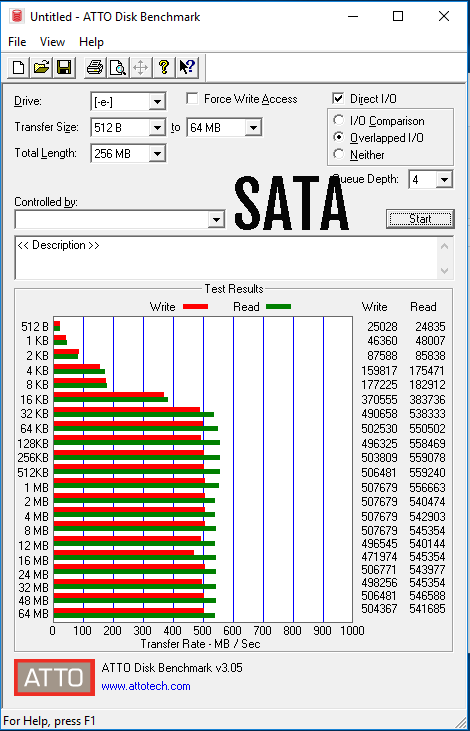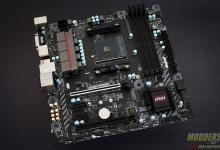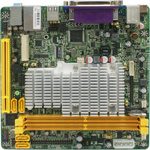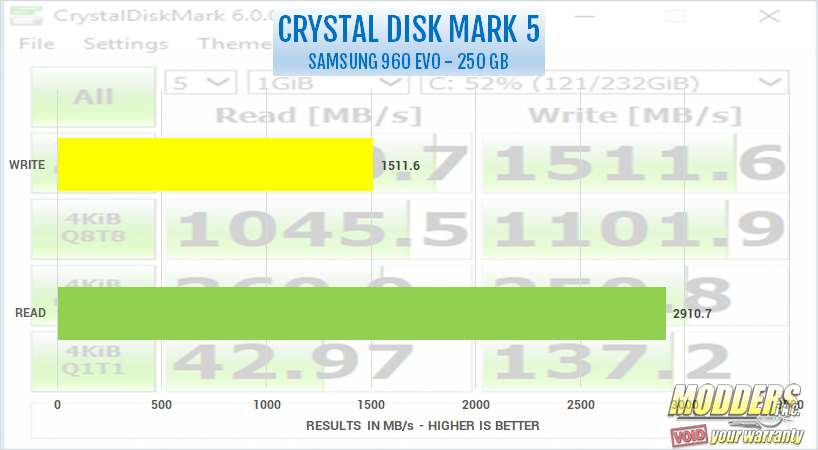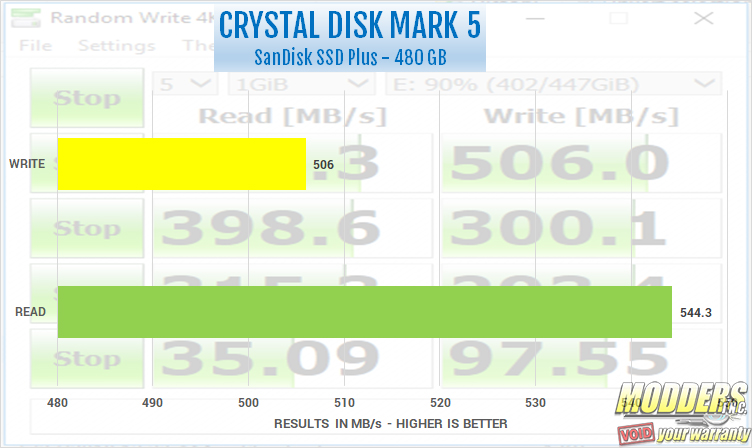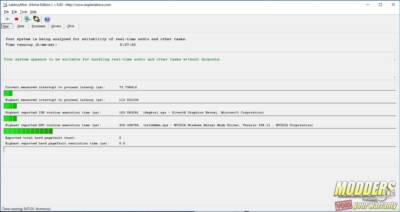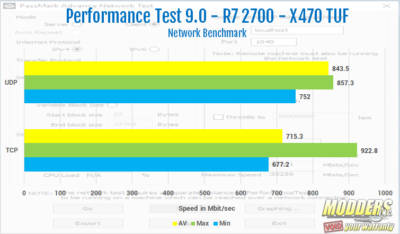Sub-System Benchmarks (Storage, Audio and Networking)
Storage Benchmarks
For Storage benchmarks, We ran two different benchmarks. The first of the two was the ATTO Disk Benchmark. The other being Crystal Disk Mark 5. We also ran the storage test in PCMARK 8. The results for that test were in the PCMARK 8 chart in the General Benchmark section. The storage test in PCMARK 8 tested the OS drive, a 250 GB Samsung 960 EVO. For both ATTO and Crystal Disk Mark, we tested both a 250 GB Samsung 960 EVO and a 480 GB SanDisk SSD Plus.
ATTO Disk Benchmark
The ATTO Disk Benchmark utility was designed to measure regular disk drive performance. However, its more than capable measuring both USB flash drive and SSD speeds as well. The utility measures disk performance rates for various sizes of files and displays the results in a bar chart showing read and write speeds at each file size. The results are displayed in megabytes per second.
In ATTO, the SanDisk SSD Plus did as expected, nearly saturation the SATA interface. It hit 559 MB/s on the read speeds and about 507 MB/s on the write speeds. On the 960 EVO, its hit 3004 MB/s and 1535MB/s on the write. The NVME results were a bit slower than I had expected from other motherboards I’ve tested the same drive on.
Crystal Disk Mark 5
“CrystalDiskMark is designed to quickly test the performance of your hard drives. Currently, the program allows measuring sequential and random read/write speeds.” It’s one of the most commonly used utilities for testing drives.
The results for CrystalDiskMark5 were very similar to the ATTO results. The SanDisk SSD Plus hit 544.3 MB/s on the read and 506 MB/s on the write. Very close to the ATTO results. On the NVME drive, the 960 EVO hit 2910.7 MB/s on the read and 1511.6 MB/s on the write. The Crystal Disk Mark results were close too, but slower than the ATTO results. They were also slower than most results I’ve recorded with these same drives in other reviews.
Audio Testing
To test the onboard audio on the X470 TUF, we use the Rightmark Audio Analyzer benchmark. However, before we run the benchmark, we must test the DPC, or Deferred Procedure Call latency. The DPC is checked to ensure the audio can produce useable results in Rightmark. DPC, or Deferred Procedure Call latency, is a Windows function that handles driver efficiency and allows high-priority tasks to defer required, but lower-priority tasks for later execution. We use LatencyMon to test the DPC Latency.
We usually run LatencyMon run for about 10-15 minutes, or until it gives us a result. This will tell us if our system is suitable for handling real-time audio with other tasks running. The highest reported ISR routine execution time was 103.08. The highest reported DCP routine execution was 436.67. At the 4000 microseconds, the system will be unsuitable for real-time audio playback. Since both results were under this range, we can continue to Rightmark Audio Analyzer.
Rightmark Audio Analyzer
To test with Rightmark, you must first plug into both the rear headphone jack and the rear mic jack using a double-ended 3.5 mm jack cable. This creates an audio loop to test the internal audio performance of the onboard audio. We tested using both 16 and 24-bit settings through a range of frequencies from 44 kHz up to 192 kHz. The chart below is to give an idea of what good results for the Rightmark benchmark look like. When compared to the results for the X470 TUF, the results show the board to have pretty good onboard audio.
Network Testing
For network testing, I used my Comcast Business class router from Motorola. I used my test bench system as the server PC and the test system as the client. The Test system has an I7 8700k on an AORUS Z370 Gaming 7, 64 gb of DDR4 3200 and a Quadro P5000. The system We use the Networking Test in the PassMark Performance Test 9. We ran both the TCP and UDP Networking tests, both on IPV4. The results are in the chart below. The networking test records result in Mbit/sec. On the UDP test the minimum was 752, max was 857.3 and the average was 843.5. As for the TCP test, the minimum was 677.2, the max was 922.8 and the average was 715.3.
